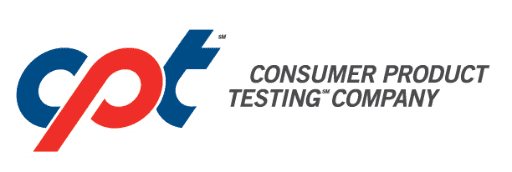The term Environmental Monitoring generally refers to the processes and activities that are conducted for the purpose of characterizing and monitoring the quality of a defined environment, with the eventual goal of controlling the quality of that environment. Environmental conditions that are often monitored include but are not limited to temperature, humidity, airflow and differential pressure. Environmental analytes that are commonly monitored include microorganisms, chemical compounds, particulates and moisture.
For the Drug and Cosmetic industries, Environmental Monitoring may be described as a process whereby critical environments are monitored for suitable conditions and for the presence of possible contaminants. Environmental Monitoring Programs employed by the Drug and Cosmetic industries typically include but are not limited to Temperature/Humidity Monitoring (e.g., warehouse, manufacturing/packaging and testing environments), Microbiological Monitoring of environments where raw ingredients, product batches and primary packaging components are directly exposed to the environment (e.g., sampling and testing areas, ingredient weighing areas and manufacturing/packaging areas), Purified Water System Monitoring and Compressed Air Monitoring. FDA ‘expects’ Drug manufacturers to implement Environmental Monitoring Programs. Although not required of Cosmetic manufacturers, Environmental Monitoring Programs make good business sense since they can reduce the risk of contaminated batches and possible product recalls.
With regard to Microbiological Environmental Monitoring, United States Pharmacopeia General Chapter <1115> entitled Bioburden Control of Nonsterile Drug Substances and Products states, “A critical consideration in ensuring product quality is to prevent conditions within the manufacturing facility or manufacturing process that favor the proliferation or ingress of microorganisms.“
Environmental Monitoring Programs Can Prevent the Most Common Product Recalls
Microbial contamination is one of the most common reasons for the recall of Cosmetic products in the US and it also ranks high on the list of reasons why Drug products are recalled. Many instances of microbial contamination of Cosmetic and Drug products can be traced to environmental conditions within the facility in which these products were manufactured or processed. Establishing an effective Environmental Monitoring Program allows each organization to maintain vigilance over contaminants of concern which may be present within their manufacturing environment and to take timely action to either eliminate or mitigate them to within acceptable levels.
What Does a Typical Drug or Cosmetic Industry Environmental Monitoring Program Consist Of?
An Environmental Monitoring Program for the Drug or Cosmetic industries typically consists of three (3) major elements: a Sampling Plan, a Testing Plan and Acceptance Criteria (Specifications).
Sampling Plan
The Sampling Plan will establish the locations to be sampled, the conditions under which sampling is to be performed, sample types to be collected, the frequency of sampling, and a description of the sampling methodology to be employed in the collection of each type of sample.
Sampling locations are typically described using a combination of verbiage, facility maps and equipment drawings.
The conditions under which sampling will be performed include “dynamic conditions” (a time when production activities are being conducted) or “static conditions” (a time when production activities are not being conducted). Sampling may also be performed before and/or after an activity has been completed.
Common sample types include but are not limited to physical measurements (e.g., temperature, humidity or differential pressure readings), air samples, surface samples (e.g., equipment contact surfaces), water samples and compressed air samples.
Sampling frequency can vary among daily, weekly, monthly, quarterly, during or upon completion of some activity.
Sampling methodologies typically include but are not limited to:
- Air Samples using either an air sampling device (e.g., centrifugal air sampler) or settling plates.
- Surface Samples using either swabs or contact plates.
- Water Samples collected from faucets, hoses and water system sampling valves and points-of-use.
Testing Plan
The Testing Plan will establish the specific analytes to be tested for and the testing methodologies to be employed.
Analytes typically include but are not limited to microorganisms, air-borne particulates, metals, specific chemical compounds of concern, and water-borne ions and organic carbon.
Testing methodologies typically include but are not limited to microbiological methodologies (microorganisms in general, specific pathogens and molds/yeasts), microscopic examination of particulates, total organic carbon (TOC), conductivity, Inductively Coupled Plasma (ICP) methodologies and chromatographic methodologies such as GC, HPLC, UPLC or IC.
Acceptance Criteria (Specifications)
The Acceptance Criteria will establish the “Acceptable” range or limit for environmental measurements (e.g., temperature and humidity) and for specific analytes (e.g., microorganisms and total organic carbon). In addition to establishing “Acceptable” ranges and limits, it is recommended that “Alert” and “Action” levels also be established so that activities may be planned and executed in an attempt to prevent the attaining of “Unacceptable” environmental measurements or analyte levels.
Let CPT assist in the design and execution of your Environmental Monitoring (EM) Program.
CPT is an FDA-registered and ISO/IEC 17025 accredited laboratory having a long history of designing EM Programs for our clients and conducting accurate testing of EM samples in a timely manner. Key staff members having first-hand experience designing EM Programs and directly interacting with FDA are ready to assist you in every phase of your EM project. Depending upon your geographic location, we can even bring our sampling equipment to your site and conduct EM sampling for you on an ongoing basis.
Why risk the possibility of batch rejections or product recalls due to environmentally-caused contamination? Give us a call today.


